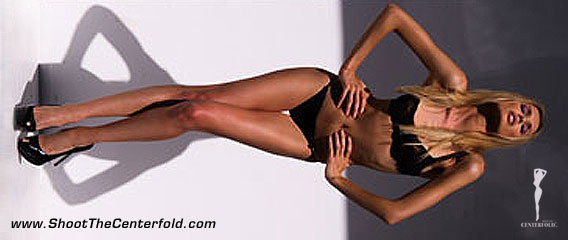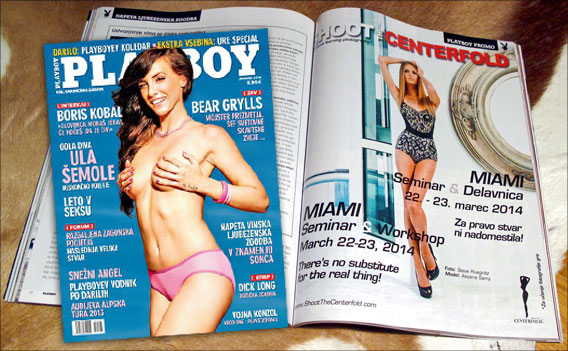Shoot The Centerfold attendee Steven Ruegnitz joins the esteemed ranks of our published photographers
Congratulations to Steven Ruegnitz, who now joins the ranks of Shoot The Centerfold’s published photographers. His success story includes scoring a full-page ad shot in a recent, international edition of Playboy. Ruegnitz, a seminar/workshop attendee many times over, attributes his success, of course, to many hours of research, development and practice, practice, practice. However, according to Ruegnitz, his true ace-in-the-hole is the education and encouragement he received from STC during his early work and the support he continues to receive on an ongoing basis. We recently chatted with Ruegnitz for a quick look into his doings and goings-on for the past few months, and it seems he has been keeping his camera quite busy.
Interview:
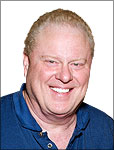 STC: First things first: How does it feel to see your work in print?
STC: First things first: How does it feel to see your work in print?
Steven: Frankly, words don’t describe this well. If you have had something on your bucket list for a very long time, how can you capture the joy when it actually happens? I refused to tell even my closest of friends prior to the release for fear of it not happening. It is just truly amazing!
STC: Let’s backtrack to see how you got to this point. Like many STC members, I’m sure you were probably wondering how to turn your dream into reality. What was your first indication that you had started down a new, serious path, and how did you convince yourself to take that first step?
Steven: That’s true. When I came to the first STC, it was simply a fluke. It looked like a good idea, but I had no idea if it would amount to anything more than a nice weekend in Florida. I was surprised even then at how serious the presentations were and that caught my attention.
But much to my surprise all the teaching photographers were actually “approachable,” which I did not expect.
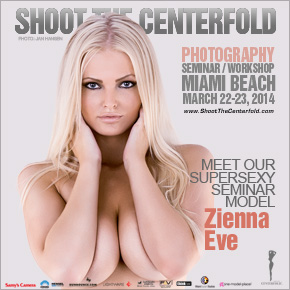 All too often in the creative side of the business, strong egos come to play and get in the way, not so at STC. I continued to come to very nearly all the STC programs. Each time wondering, will it be worth it? Will I learn something new that I can actually use myself and each time I was not disappointed.
All too often in the creative side of the business, strong egos come to play and get in the way, not so at STC. I continued to come to very nearly all the STC programs. Each time wondering, will it be worth it? Will I learn something new that I can actually use myself and each time I was not disappointed.
I think the turning point for me was when I understood I wanted to really focus on learning beyond even the best seminar program can provide. What I visualized was likely going to be a big commitment. There was no formal program of one-on-one training, but I asked and found myself training in LA and Miami with a number of the masters featured in the STC program. The training days were long and demanding, but the results in the images proved to me what I could do with the right instruction and support.
The corner was turned somewhere along the line probably over one of many delightful meals that seemed to just happen. I found Jarmo and others supporting, guiding, pushing even to make me see for myself what might be possible. To be fair, I was still full of doubt. After all, I am training with masters who have dedicated their lives to the creation of their craft. Why should I think even for a second I could walk down that road? Great that I had a dream, but” let’s keep it real,” was always in my head.
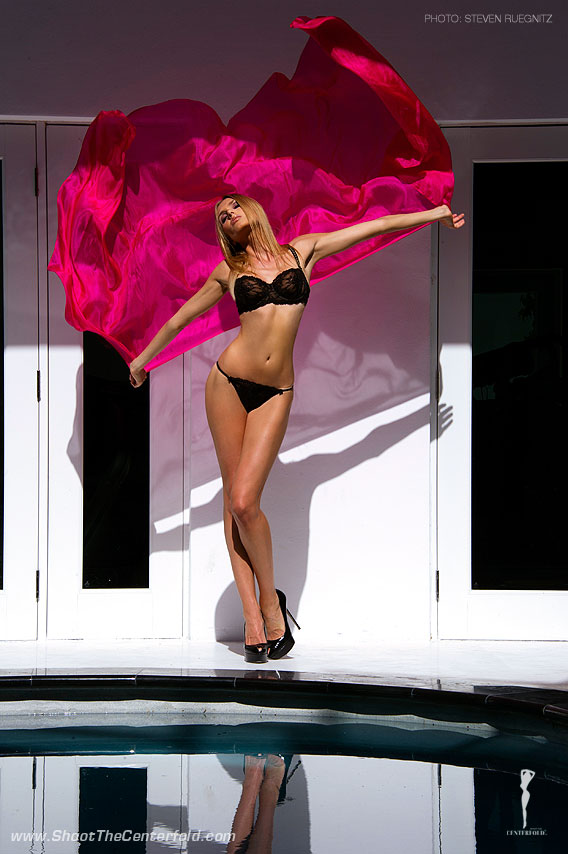
I was to find that nobody in the STC community accepted my own mental limits as real. All from models, to MUAs, to the principal photographers in the seminars and in the private instruction pushed the, “It’s the image…” not your background or names that will make it happen.
Today, clearly that is true. It is the image!
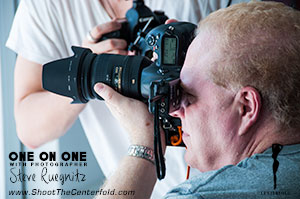 STC: Everybody wants to know about the equipment and set-up you used. What was it? Also, was it difficult finding the right gear in order to shoot at a professional level? The pros say a camera is a camera, but the right gear makes a job easier. Was it a challenge getting the right camera and the right lenses?
STC: Everybody wants to know about the equipment and set-up you used. What was it? Also, was it difficult finding the right gear in order to shoot at a professional level? The pros say a camera is a camera, but the right gear makes a job easier. Was it a challenge getting the right camera and the right lenses?
Steven: No, and to put it out there, I am a gadget guy in photography and in the rest of my life. Who does not like a new cool toy? My own preference I use Nikon gear and while I have a range of lenses I think that 90% of my shooting is done with two of them. Lighting, I have used everything from totally basic lighting up through top of the line Hensel professional gear. Yes, having precisely the right lighting equipment can make things fast an easy, but as an example, the shot that was just published was a creative use of the sunlight and as I recall two very mortal strobes. There was nothing exceptional in gear at all.
STC has allowed me to explore a lot of lighting styles and frankly I love doing it. I have done shoots with 10 lights and lots of modifiers and hours of setup. For me, I love that challenge and the “classic” Playboy look that this produces. But it’s also the case that a single strobe or single ring light or the use of simple reflectors can make just the shot as well. As I progress through my own learning I know that as much as I like the classic look of the Playboy Masters, style changes over time. Pick up a 1970s magazine and compare it to anything today and the look is totally different. I am having to push myself to never get comfortable with a single approach, but to study the work of current photographers and see what editors today look for not just what they used to look for is very important says Jarmo Pohjaniemi.
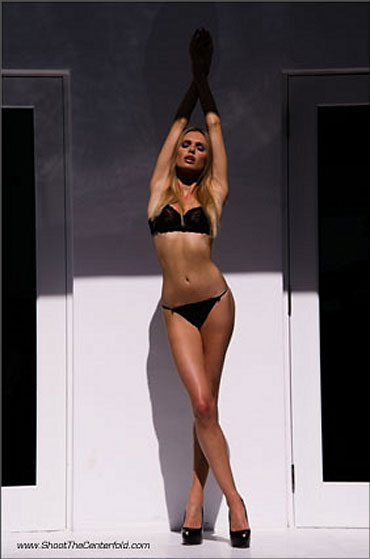 STC: Tell us about your model for the ad, Aksana. It was probably intimidating at first to work with a model of her caliber, is this correct? What does a photographer need to know before he hires an agency model?
STC: Tell us about your model for the ad, Aksana. It was probably intimidating at first to work with a model of her caliber, is this correct? What does a photographer need to know before he hires an agency model?
Steven: When I found that Aksana had accepted the assignment to shoot with me, I instinctively looked into her background. “Oh my” was my first reaction. This lady REALLY knows her stuff and here am I learning. I have to say she was just a delight to work with. There was a series I was trying to capture that required her to walk and jump in high heels on the cement of a pool deck. Of course my timing was off and she had to do it countless times before we got the shot (which in the end we did.) Never once did she complain! Inside of minutes of being on the set, she became one of the team. We would study images, review wardrobe, work on makeup, change lighting, and through it all she would contribute and work her part of any of it until it was perfect. Her skilled eye looking at what we were looking at was a major asset to the shoot. A session like this is a team effort and Aksana proved why a pro model can help make any shoot. I would be delighted to work with her again.
An agency booking (and now I have done a few since Aksana) requires the photographer visualize what is needed for the shoot before you pick the model! What is the theme of the shoot? What wardrobe are you looking to use? Is there a target for the images in terms of market or publication? Do you have a request from an editor for something specific? This is not a case of “please send me a nice model…” if you are going to the time, effort and expense of working with an agency model. It’s also the case that the agency is going to want to know what the images are for. When a model reaches the level of top agency representation in his or her career they too have a need to understand how they will look. I did a fashion shoot in New York City early this year where, with the help of my team, went through 150 portfolios from the agencies and actually did a casting call where I met and reviewed 55 models in person before picking the person I wanted to use. It can be a big deal, but the work up front makes all the difference when you get behind the camera.
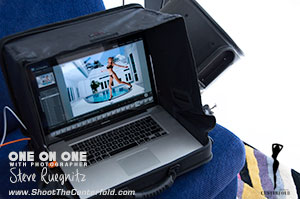 STC: Okay, so now you’re a published photographer. What next? Has it changed your clientele, or perhaps your approach to photography and business, or both? What do you do when a model comes up to you, points at your ad, and says, “I want you to make me look as good as she does”?
STC: Okay, so now you’re a published photographer. What next? Has it changed your clientele, or perhaps your approach to photography and business, or both? What do you do when a model comes up to you, points at your ad, and says, “I want you to make me look as good as she does”?
Steven: You know I almost don’t know how to answer this. Photography for me, for well over 40 years, has been my passion and my art and not my career. My life’s goal has been for excellence, pure and simple, images that capture the best of whomever I am shooting. I view this publication as simply a happy moment in a journey that has a long way to go. Hey, don’t get me wrong! I do remember telling Jarmo that one of my dreams was to get published in Playboy … which now has become reality.
I think about every person I shoot from a beginner to the most seasoned agency model is simply a golden opportunity to create something of beauty. To be fair, the work in the creative process is hard. So when I do get approached to shoot anyone I want to make sure I feel the mutual passion in the subject who really wants to work with me. This is not “click, click, click” like some of the TV programs might have you believe. It takes time and effort of all involved and I look for that intense desire to “make it great” as the key for me. If a model wants to look as great as Aksana, then I ask myself, could she jump in high heels dozens of times to get the shot as Aksana did? The answer needs to be yes!
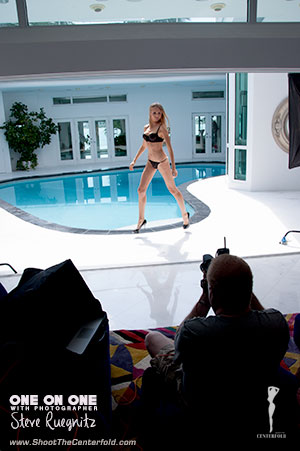 STC: Let’s talk schooling. What would you say are the most important things you’ve learned from the seminar/workshop series?
STC: Let’s talk schooling. What would you say are the most important things you’ve learned from the seminar/workshop series?
Steven: Without a doubt, there is a craft to photography. You really do need to understand the basics of the systems you are using. Yes, you really do need to know about f/stops and depth of field and the operation of your gear. Great images are not usually created while your camera is on “Auto”. I was well past that stage when I found STC. STC for sure moved up my game in lighting, be it simple or complex. But more than that it was about how to “see” or visualize the shot. Both in the actual shooting at STC and in the workshop sessions looking at the images of others you were able to learn how some of the most amazing shots you have likely seen in publications were actually done. Think of STC sessions as simply stretching your mind to see possibilities you thought were beyond your grasp.
Beyond the shooting STC made opportunities to meet accomplished editors, production talent, and all sorts of folks involved in the creative and publication process. I recall when my own work was being reviewed for the first time by one of the Playboy editors. Yes, I was nervous beyond words and while the discussion was no nonsense, it was just what I needed and was supportive and constructive about how to continue to improve my work. When can you get this kind of access anywhere else?
The other thing not to be missed is “talk to people!” I have met great friends during the breaks and meals at STC. It’s about the networking of the event not just the formal sessions.
STC: How long have you been shooting seriously? What got you started in photography and will it become your next career?
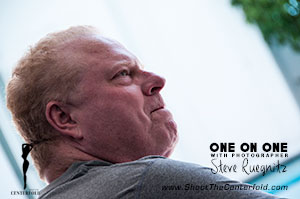 Steven: My first camera entered my hands at age 17 and had a “flashcube” on the top of it! I am north of 60 these days and have been shooting along the way. I have had some formal photography education in college and a little bit over the years, but nothing like what has happened since I joined into the STC community. I am approaching retirement in my day job and thanks to some good fortune along the way have been able to build a brand new dream photography studio on my home in Florida. Sadly, for the moment it has had way too little activity in it but I hope to fix that in the not too distant future. I don’t know if this will be another career for me or the continuation of a lifelong passion. I love when shooting also assists a model in progressing her career. I don’t know where this goes for me, but it’s been one heck of a ride — so far.
Steven: My first camera entered my hands at age 17 and had a “flashcube” on the top of it! I am north of 60 these days and have been shooting along the way. I have had some formal photography education in college and a little bit over the years, but nothing like what has happened since I joined into the STC community. I am approaching retirement in my day job and thanks to some good fortune along the way have been able to build a brand new dream photography studio on my home in Florida. Sadly, for the moment it has had way too little activity in it but I hope to fix that in the not too distant future. I don’t know if this will be another career for me or the continuation of a lifelong passion. I love when shooting also assists a model in progressing her career. I don’t know where this goes for me, but it’s been one heck of a ride — so far.
STC: You are now also shooting other genres beside glamour. What would you say is the most important quality to have when shooting fashion?
Steven: In fashion, my first goal was to learn the philosophy behind Fashion! I started subscribing to some famous (but largely unheard of in the US) fashion magazines of Europe. The photography tends to be very cutting edge and has strong styles.
In fashion, it’s about a “story” around a theme that supports the clothes. In glamour, the focus is on the model whereas in fashion the model is simply a part of the story being told.
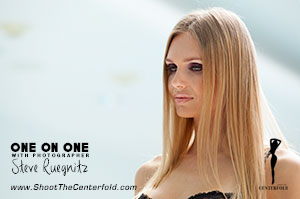 This means all involved from the model to photographer and the crew have to been thinking about where this set of images is going. How is the story being told? How are the clothes or products being displayed. It is not about “the girl” as it so frequently is in glamour.
This means all involved from the model to photographer and the crew have to been thinking about where this set of images is going. How is the story being told? How are the clothes or products being displayed. It is not about “the girl” as it so frequently is in glamour.
STC: What about lens choices? Would you shoot glamour with a different lens than you would fashion? Or does it make a difference?
Steven: I think the best answer is that “I am still learning.” To be clear, I did NOT have go buy all new gear to shoot fashion. I have been successful in fashion shooting with the gear I have. I do use the lighting differently. I also find shooting angles are different to some degree. I have so much to explore in this area. I would also have to say that my shooting fashion at all was out of a one-on-one training session from STC. I had no experience or even understanding of how to shoot Fashion, but when suggested, I was thrilled to take a chance. It worked! I have gotten out of my comfort zone to try things totally new to me. It just proves that you can teach an old dog new tricks!
 STC: Now for the nuts and bolts: Just how do you start bringing a concept to the camera? We all know about having a “Plan B” in place, but what does that mean when trying to decide on “Plan A”?
STC: Now for the nuts and bolts: Just how do you start bringing a concept to the camera? We all know about having a “Plan B” in place, but what does that mean when trying to decide on “Plan A”?
Steven: It takes planning and I don’t mean 30 minutes before everyone arrives. When you are trying to visualize a shoot you need to really have an idea of what the image or images are going to come out looking like. But we all know things don’t go as planned. The light does not arrive or something is late, what happens when the clouds cover the sun? What happens when Mother Nature treats you to a rain storm? Do you just get to call the client back and say “sorry?” No of course not! You as the photographer own the outcome no matter what happens. If you think ahead and prepare for the worst then something good will come of the shoot no matter what circumstance throws your way.
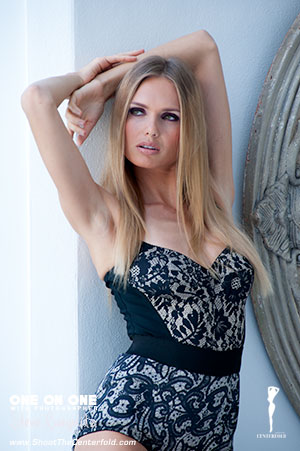 STC: I guess the real question is, where does the heart of your photography live? When shooting for an assignment, how much of Steven Ruegnitz goes into it? How do you make someone else’s idea (like for a client or editor) your own?
STC: I guess the real question is, where does the heart of your photography live? When shooting for an assignment, how much of Steven Ruegnitz goes into it? How do you make someone else’s idea (like for a client or editor) your own?
Steven: This depends on the assignment. If you are shooting a commercial assignment the editor or art director will know what they want. That still leaves it to me to figure out how it will really look, but it can be the case that what I might view as the best looks will not match the clients view. When shooting for a client you need to fulfill the client’s vision. You are hired because you have already shown vision so you are part of the process but it’s more shared in a client relationship.
When I am shooting for my own work, it’s a different mix. I love working with a creative team. You never know where a good idea will come from and you need to be open to listen. It could be an assistant, MUA, model, who may see something you did not see. Listen well! In the end though, do I get the vision I am looking for when I am shooting? That’s the test for me at least on my own work.
STC: We’ve spoken at length of finding the right model for the job. Do you have a system or process for finding your models?
Steven: I can’t claim it’s a system at all. Yes, agencies have been useful in Fashion work in particular. In glamour, models can come from anywhere. In fact, countless woman I have shot over the years don’t consider themselves models at all. Very few people don’t like the opportunity to look great and in many cases come out looking better than any image they have ever had of themselves. It’s hard not to appreciate an image when you look better than you ever dreamed possible. I do have one thing I tend to look at in particular, the eyes. I can deal with all sorts of body types but do the eyes really connect? Are they expressive, full of emotion? I would not call that a system but it’s a starting point for me at least.
STC: I guess it’s a thin line we walk. We all like working with a model whom we desire to see as a muse for our work, someone whim whom we resonate. But how do you capture these articulations and nuances when the model is chosen for you?
Steven: When working with the pick of another the first thing I do is study that person. First, we are all people. Spend the time to sit and just talk. What does the person like? What is going on in their life? You don’t have to spend a week, but establish a connection with another person and find out about them. If you can establish a person to person connection and have studied them before ever picking up the camera, you will likely know where to go to capture the best they bring to the shoot.
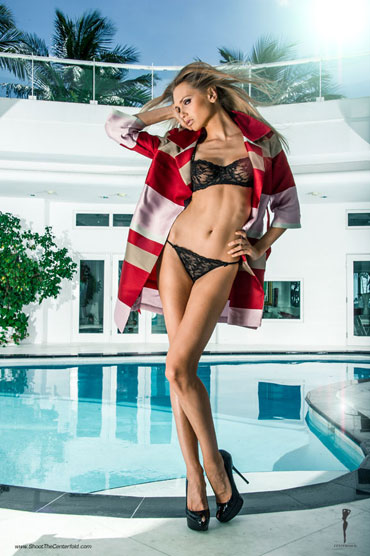 STC: You bring up valid points. Usually when a photographer is starting out, they choose from a selection of model candidates for their projects, and many good photographers fail to make the next step to working with better models. You know this as well as anyone, but how do you make the leap of faith from working with a handful of local talents to contacting agency models?
STC: You bring up valid points. Usually when a photographer is starting out, they choose from a selection of model candidates for their projects, and many good photographers fail to make the next step to working with better models. You know this as well as anyone, but how do you make the leap of faith from working with a handful of local talents to contacting agency models?
Steven: It took a long time I would say because much of my life working with local talent was my reality. When I started working in the STC community, as well as in some other aspects of my shooting, I came into contact with more seasoned models. Well guess what, my “good” shooting suddenly looked “great?” I think you need to get to a level in your own shooting where this leap makes sense. If you don’t know what an f/stop is the most seasoned model in the world can’t correct that. Be honest with yourself and seek the critique of others more advanced then you are. I recall a conversation I had a couple of times with two of my STC teachers. Both assessed me as “technically competent” in that I really can handle a camera and a decent array of lighting. But my images were not making it to the next level and I absolutely agreed with that assessment.
For me today, when I train with masters in the craft, it’s not about how to set a camera or a light for the most part. Yes, there is always something new to be learned in all these sessions, but now I enjoy getting pushed to get the best out of any situation, model, or team. How can I find a single image that will take your breath away? It’s not about shooting in quantity, it’s about working the shot until it’s not just good it’s great! That is a change in style I think for many of us. You think that if you shoot enough frames something will come out instead of visualizing what you want and working that one image until you have it nailed.
 It’s not just with the model that this is true. I never understood what the contribution of a great makeup artist brings to a shoot. The transformation from a model walking in from the street in the hands of a good MUA makes everything work. In my fashion shooting, it gets even more demanding with hair, makeup, and likely a stylist who is skilled in all aspects of clothes and accessories. If you are doing studio work you quickly learn what a great set designer does. I don’t know how many people know that a very large number of the famous Playboy centerfold shoots are not real locations at all but sets designed for just the shoot.
It’s not just with the model that this is true. I never understood what the contribution of a great makeup artist brings to a shoot. The transformation from a model walking in from the street in the hands of a good MUA makes everything work. In my fashion shooting, it gets even more demanding with hair, makeup, and likely a stylist who is skilled in all aspects of clothes and accessories. If you are doing studio work you quickly learn what a great set designer does. I don’t know how many people know that a very large number of the famous Playboy centerfold shoots are not real locations at all but sets designed for just the shoot.
All of this can sound a bit daunting I suspect when you read this. I did not start out with all of this. I learned along the way. Every other craft be it MUA, grip, set design, hair, fashion design all have people who also want to learn and start. Find people who want to work with you together. Everyone wins and learns along the way.
~Steve Ruegnitz

© 2014 Copyright ShootTheCenterfold.com. All rights reserved.





